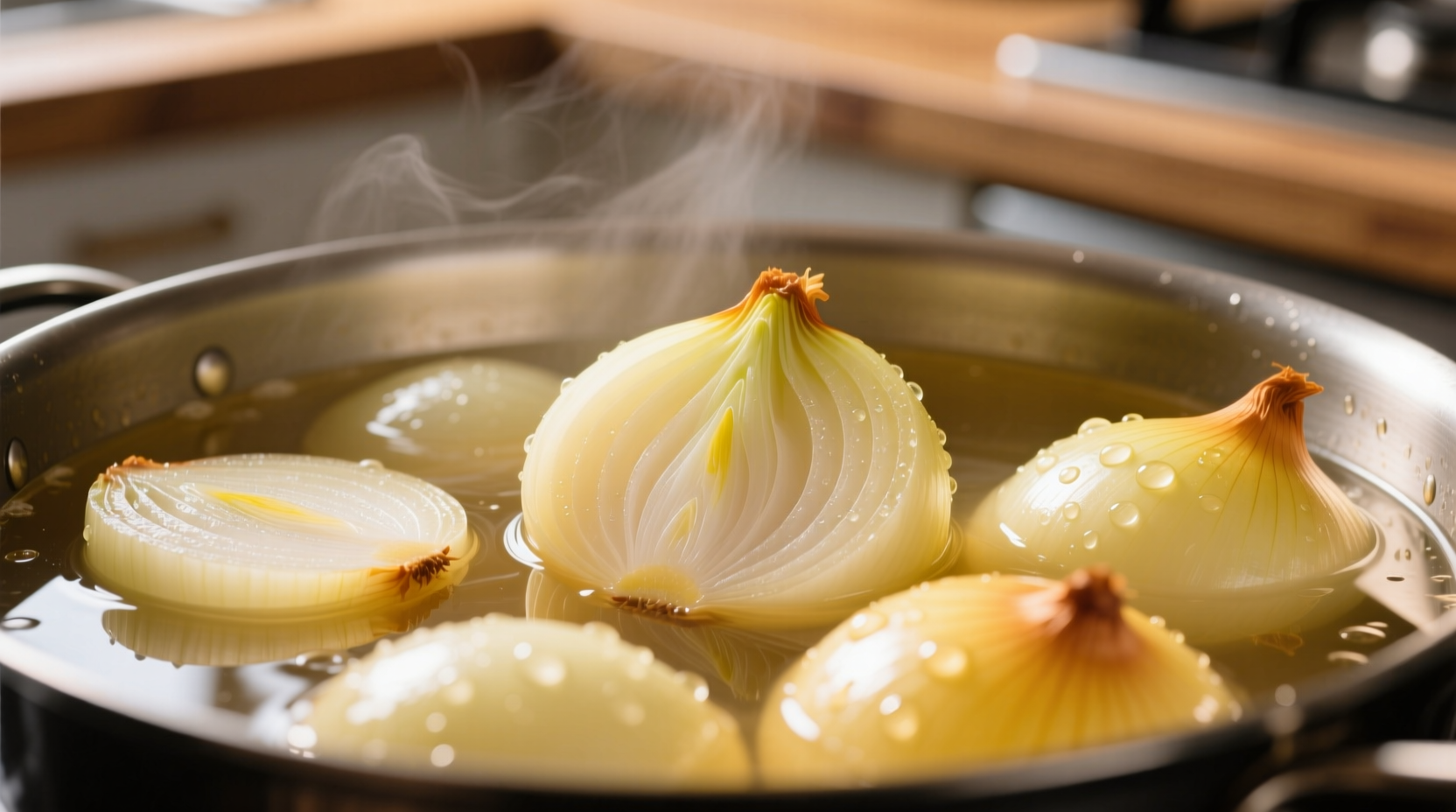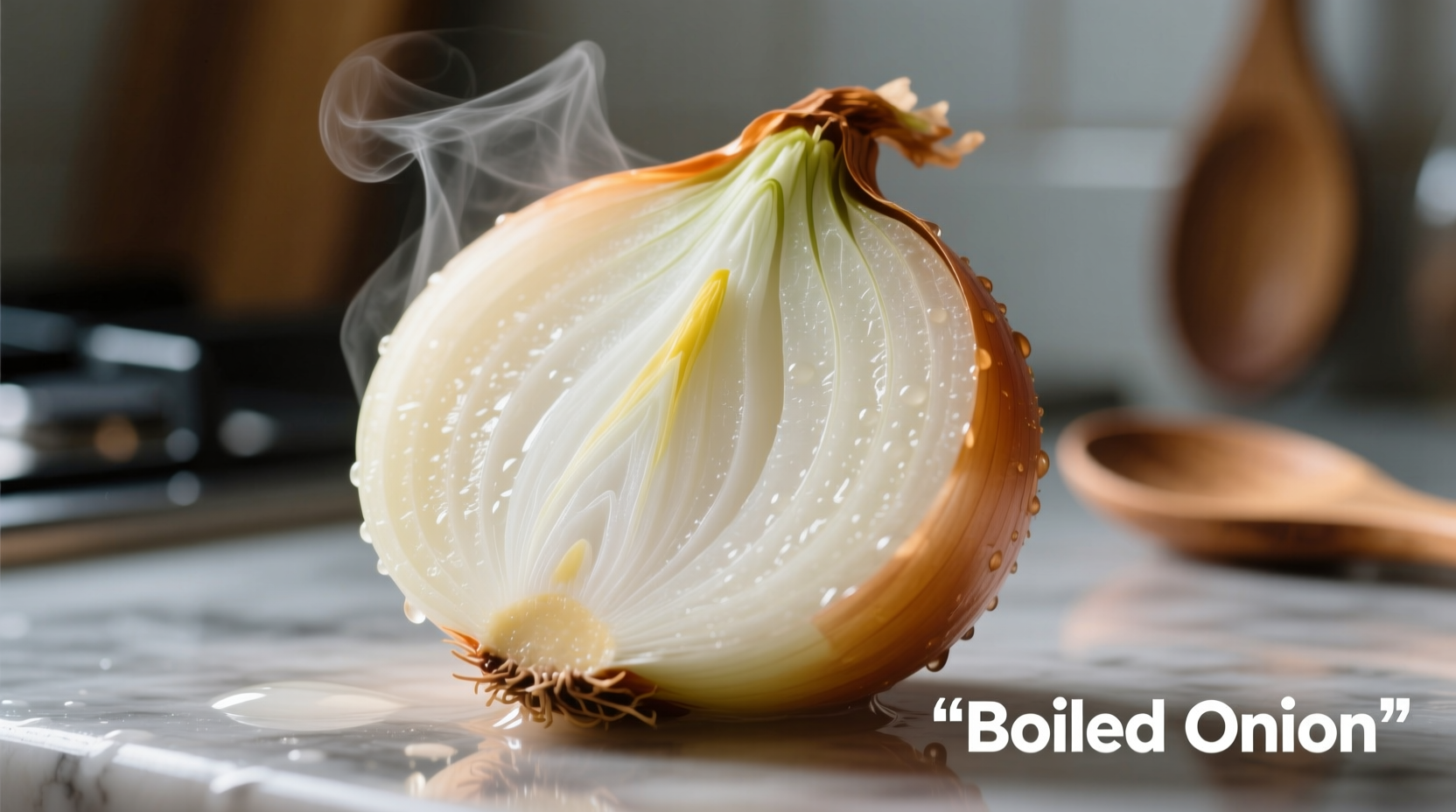Boiled onions offer a milder, sweeter flavor profile compared to raw onions, making them ideal for soups, stews, and side dishes. When properly prepared, they maintain texture while losing their sharp bite, providing versatile culinary applications from French onion soup to traditional Indian curries. This guide reveals professional techniques for achieving perfectly boiled onions every time.
The Science Behind Boiling Onions
Understanding what happens when onions meet boiling water explains why this simple technique transforms their character. As onions cook, the sulfur compounds responsible for their pungent aroma break down, while natural sugars caramelize slightly. This chemical transformation creates that distinctive sweet, mellow flavor profile that makes boiled onions so valuable in professional kitchens.
Choosing the Right Onion Variety
Not all onions behave the same when boiled. Selecting the appropriate variety prevents disintegration or uneven cooking:
| Onion Type | Best For Boiling? | Texture After Boiling | Flavor Profile |
|---|---|---|---|
| Yellow onions | ✓ Ideal | Firm but tender | Sweet with mild sharpness |
| Red onions | ✓ Good | Softer texture | Milder, slightly fruitier |
| White onions | △ Acceptable | Can become mushy | Stronger flavor retention |
| Shallots | △ With caution | Very delicate | Subtly sweet |
| Green onions | ✗ Not recommended | Disintegrates quickly | Loses distinctive flavor |
This comparison aligns with recommendations from the Culinary Institute of America's vegetable preparation guidelines, which emphasize matching onion varieties to cooking methods for optimal results.
Professional Boiling Technique: Step-by-Step
Follow this chef-tested method for perfectly boiled onions that maintain structure while developing complex flavor:
- Preparation: Peel onions and trim root ends while keeping the onion intact. For larger onions, make a shallow "X" cut at the root end to help heat penetrate evenly.
- Water temperature: Always start with cold water. Adding onions to boiling water shocks them, causing uneven cooking. The USDA's Food Safety and Inspection Service confirms that gradual temperature changes preserve vegetable integrity.
- Ratio: Use 4 cups of water per pound of onions. Crowding the pot creates uneven cooking.
- Seasoning: Add 1 teaspoon of salt per quart of water. This seasons from within and helps maintain structure.
- Cooking time: Small onions (1-2" diameter): 15-20 minutes; Medium onions (2-3" diameter): 25-30 minutes; Large onions (3"+): 35-40 minutes.
- Testing doneness: Insert a thin knife blade. It should meet slight resistance in the center but slide in easily at the edges.
- Stopping the process: Immediately transfer to ice water for 2 minutes to halt cooking and preserve texture.

Avoiding Common Boiling Mistakes
Even experienced home cooks make these critical errors when boiling onions:
- Overcooking: Results in disintegration and loss of flavor complexity. Set a timer and check 5 minutes before expected completion.
- Starting with hot water: Causes outer layers to cook too quickly while centers remain raw.
- Skipping the ice bath: Residual heat continues cooking, turning tender onions to mush.
- Using insufficient salt: Without proper seasoning, boiled onions taste bland and one-dimensional.
- Cutting before boiling: Releases too many sulfur compounds, creating unpleasant odors and flavors.
Culinary Applications of Perfectly Boiled Onions
Mastering boiled onion technique opens numerous culinary possibilities:
Soup and Stew Foundation
Boiled onions provide a sweeter base for French onion soup, eliminating the need for hours of caramelization. The American Heart Association recognizes this method as a heart-healthy alternative to traditional butter-heavy onion soup preparations.
Traditional Dish Applications
Many global cuisines rely on boiled onions as essential components:
- Indian cuisine: Boiled onions form the base for many kormas and butter chicken sauces
- Middle Eastern dishes: Essential for perfect dolma fillings
- Eastern European recipes: Key ingredient in traditional borscht
- Mexican cooking: Used in certain mole preparations for balanced sweetness
Nutritional Transformation
Boiling changes onions' nutritional profile significantly. According to USDA FoodData Central, a 100g serving of boiled onions contains:
- 40% less vitamin C than raw onions (water-soluble vitamins leach into cooking water)
- Increased bioavailability of certain antioxidants
- Reduced sulfur compounds (beneficial for those with digestive sensitivities)
- Lower caloric density (62 calories per 100g vs 40 for raw)
For maximum nutritional benefit, use the cooking liquid in soups or sauces rather than discarding it.
Advanced Techniques for Flavor Enhancement
Professional chefs employ these methods to elevate boiled onions beyond basic preparation:
- Aromatic infusion: Add bay leaves, peppercorns, or fresh thyme to the boiling water
- Acid balancing: Add 1 tablespoon of vinegar per quart to maintain structure and brighten flavor
- Finishing technique: After boiling, sauté briefly in olive oil to develop additional flavor complexity
- Layered seasoning: Add salt in stages rather than all at once for deeper flavor penetration
Troubleshooting Your Boiled Onions
Encountering issues with your boiled onions? These solutions address common problems:
- Onions falling apart: You likely used too large a variety or overcooked them. Try smaller yellow onions and reduce cooking time by 5-10 minutes.
- Too much sharpness remaining: Extend cooking time by 5 minutes or add a pinch of sugar to the water to accelerate sulfur compound breakdown.
- Bland flavor: Increase salt concentration slightly or add aromatic elements to the cooking liquid.
- Uneven cooking: Ensure consistent onion size and avoid overcrowding the pot.
Storage and Usage Tips
Properly stored boiled onions maintain quality for various applications:
- Refrigerate in airtight container for up to 5 days
- Freeze for up to 3 months (best when incorporated into soups or stews)
- Never store in the cooking liquid, as this continues the cooking process
- Revive refrigerated boiled onions by briefly simmering in fresh broth











 浙公网安备
33010002000092号
浙公网安备
33010002000092号 浙B2-20120091-4
浙B2-20120091-4